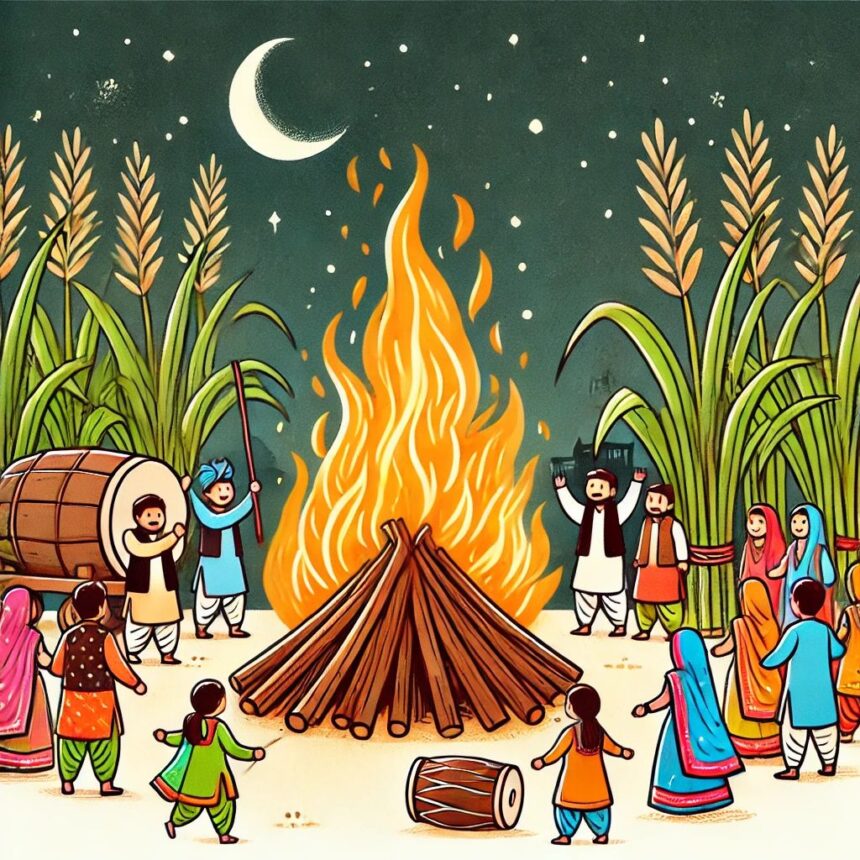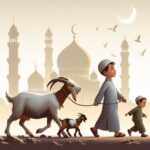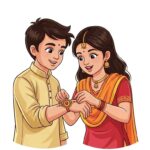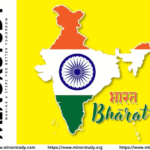Lohri: Overview
Lohri is a popular Punjabi festival, celebrated primarily in Punjab, Haryana, Himachal Pradesh, and parts of North India. It marks the end of winter and the arrival of longer days, coinciding with the harvest of rabi crops like sugarcane, wheat, and mustard.
Lohri is celebrated on 13th January every year, the eve of Makar Sankranti, and is known for its joyous bonfires, folk songs, dances, and traditional feasts. It is a festival of gratitude, prosperity, and social bonding.
History of Lohri
The origins of Lohri are rooted in agrarian and cultural traditions:
Agricultural Significance:
Farmers celebrate Lohri as a harvest festival, thanking nature and the Sun God for a bountiful crop.
Legend of Dulla Bhatti:
A folk hero, Dulla Bhatti, is celebrated during Lohri for rescuing girls from slavery and helping the poor.
Traditional songs recount his bravery, and children sing about him while collecting treats.
Winter Solstice:
Lohri coincides with the shortest day of the year, symbolizing the return of longer daylight and warmth.
Significance of Lohri
Agricultural Significance:
Marks the harvest of sugarcane, wheat, and other rabi crops, celebrating farmers’ hard work and prosperity.
Cultural Significance:
A festival of music, dance, and community, preserving Punjabi folk traditions.
Social Significance:
Strengthens family ties and community bonds through collective celebrations, bonfires, and feasts.
Religious Significance:
Lohri is associated with prayers to the Sun God, thanking nature for nourishment and abundance.
Rituals and Celebrations
Lohri is celebrated with vibrancy, music, and traditional customs:
1. Bonfire
The central ritual of Lohri is the lighting of a bonfire, around which families and communities gather.
People throw sesame seeds, jaggery, and popcorn into the fire as offerings to the Sun God.
The bonfire symbolizes warmth, prosperity, and the triumph of light over darkness.
2. Singing and Dancing
Traditional folk songs and dances like Bhangra and Gidda are performed around the bonfire.
Children go from house to house singing Lohri songs and collecting sweets and treats.
3. Feasting
Special foods are prepared, including:
Rewari, Gajak, Til (sesame) sweets, popcorn, and jaggery.
Families and communities enjoy lavish feasts, sharing seasonal produce and festive dishes.
4. Celebrating Newborns and Newlyweds
Lohri holds special significance for families with newborns or newlyweds, as it is believed to bring prosperity and blessings.
Communities gather to offer prayers and share joy with these families.
Lohri Around India
Punjab and Haryana: Celebrated with grand bonfires, Bhangra, Gidda, and folk songs.
Himachal Pradesh: Farmers perform rituals to thank nature and local deities.
Delhi and NCR: Punjabis living here celebrate Lohri with community gatherings, feasts, and cultural programs.
Other parts of India: Spread by Punjabi communities, Lohri is celebrated with songs, dances, and sweets.
Impact on Daily Life and Society
Agricultural Awareness: Encourages appreciation of farmers and seasonal cycles.
Community Bonding: Strengthens social ties and cultural identity.
Cultural Preservation: Keeps alive folk music, dances, and traditional cuisine.
Economic Activity: Boosts markets for sweets, jaggery, traditional clothes, and festive items.
Family and Social Joy: Fosters celebration, gratitude, and unity among families and neighbors.
FAQs about Lohri
When is Lohri celebrated?
On 13th January every year, the eve of Makar Sankranti.
Why is Lohri celebrated with a bonfire?
The bonfire symbolizes warmth, light, and the triumph of good over evil, and is a ritual offering to the Sun God.
What foods are associated with Lohri?
Popcorn, sesame seeds (til), jaggery (gur), rewari, gajak, and seasonal crops.
Who is Dulla Bhatti and why is he remembered?
A folk hero of Punjab known for rescuing girls from slavery and helping the poor, celebrated through songs during Lohri.
Is Lohri a religious or cultural festival?
Primarily a cultural and agrarian festival, with roots in religion and community traditions.
Conclusion
Lohri is a celebration of harvest, warmth, and community spirit. It inspires gratitude, joy, and togetherness, bringing families and communities together around bonfires, music, and feasts. Lohri is not just a festival—it is a cultural emblem of Punjab, preserving traditions, folk arts, and social harmony.








